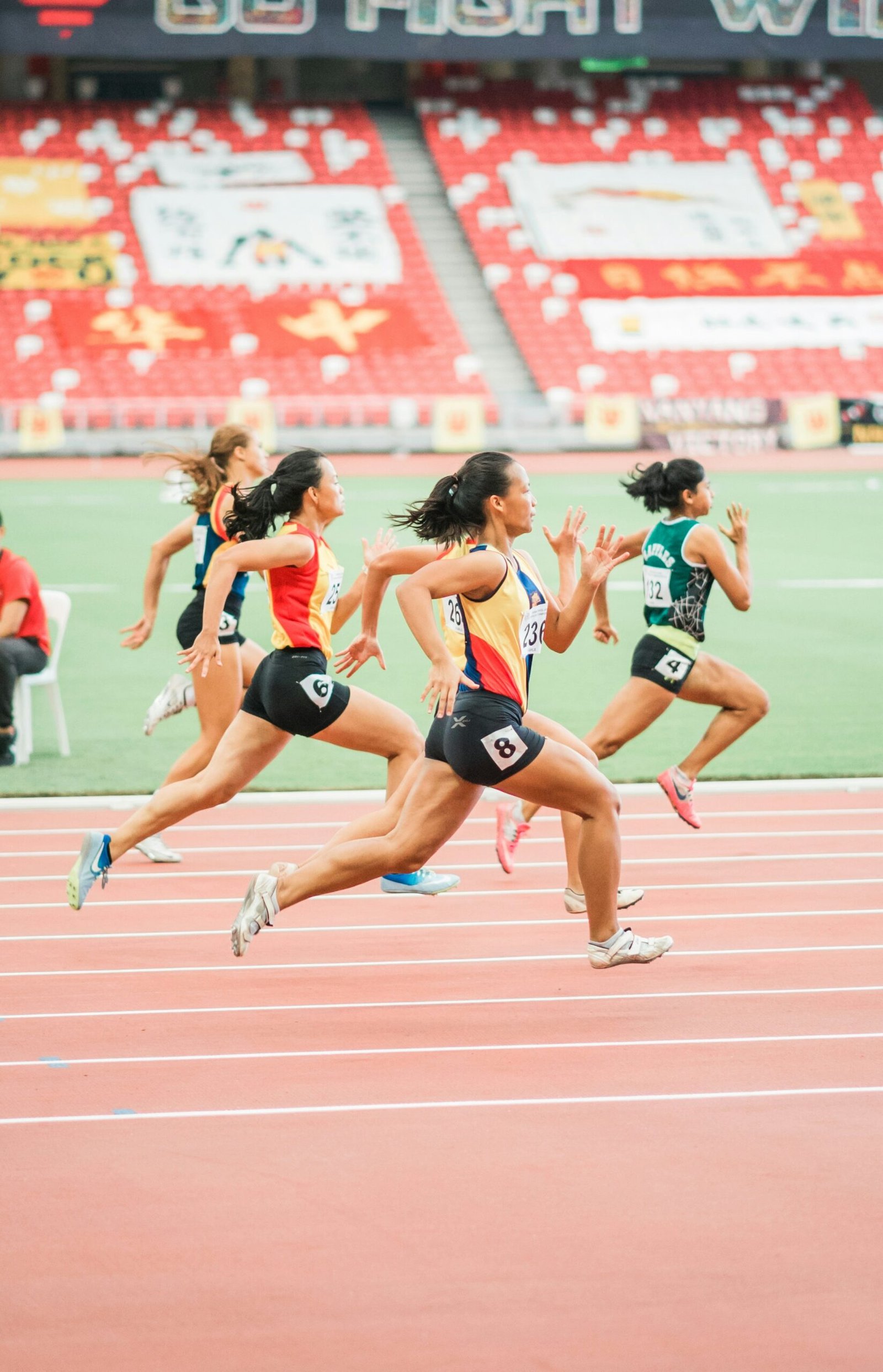
Road Cycling in the Olympics
The Olympic Games are known for showcasing the best athletes from around the world, competing in a wide range of sports. One of the most thrilling and challenging events is road cycling. In this blog post, we will explore the history, rules, and excitement of road cycling in the Olympics.
Road cycling has been a part of the Olympic Games since the very beginning. The sport made its debut in the 1896 Olympics held in Athens, Greece. Since then, it has become one of the most popular and prestigious events in the Games. Road cycling involves athletes racing on paved roads, covering long distances and tackling various terrains and elevations.
The rules of road cycling in the Olympics are quite straightforward. The race is typically held on a circuit or a point-to-point course, with athletes competing against each other to complete the distance in the shortest time possible. The winner is determined by crossing the finish line first. However, there are also different types of road cycling events in the Olympics, including individual time trial and team time trial.
The individual time trial event is a test of an athlete’s individual abilities against the clock. Riders start at intervals and race against time to complete the distance. The athlete with the fastest time wins the gold medal. On the other hand, the team time trial event involves teams of cyclists racing against the clock. The team’s time is determined by the third rider crossing the finish line, and the team with the fastest time takes home the gold.
One of the most exciting aspects of road cycling in the Olympics is the unpredictable nature of the races. The athletes face various challenges, including unpredictable weather conditions, steep climbs, and technical descents. These factors add an element of thrill and excitement to the sport, making it a favorite among spectators.
Over the years, road cycling in the Olympics has seen some remarkable performances and legendary athletes. From Eddy Merckx to Miguel Indurain, the sport has produced iconic figures who have left a lasting impact on the cycling world. The Olympic road cycling events also provide a platform for young and emerging talents to showcase their skills and compete against the best in the world.
In conclusion, road cycling in the Olympics is a thrilling and challenging sport that has captivated audiences for over a century. With its rich history, straightforward rules, and unpredictable races, it is no wonder that road cycling continues to be one of the most eagerly anticipated events in the Olympic Games. Whether it is the individual time trial or the team time trial, road cycling in the Olympics never fails to deliver excitement and drama, making it a must-watch event for sports enthusiasts around the globe.
One of the most significant developments in the history of road cycling in the Olympics was the introduction of the time trial event. This event was first included in the Olympic program in 1912 in Stockholm, Sweden. The time trial is a test of an individual cyclist’s speed and endurance, as they race against the clock over a set distance. It requires a different set of skills compared to the traditional road race, as cyclists have to pace themselves and maintain a consistent effort throughout the race.
In addition to the time trial, another notable addition to the Olympic road cycling events was the inclusion of the team time trial. This event made its debut in the 1960 Rome Olympics and has since become a thrilling and highly competitive discipline. In the team time trial, a group of cyclists from the same country work together to cover a set distance as quickly as possible. The team’s time is determined by the fourth rider to cross the finish line, which adds an element of strategy and teamwork to the event.
Throughout the years, the Olympic road cycling events have showcased the talents of some of the greatest cyclists in history. From legendary figures like Eddy Merckx and Miguel Indurain to more recent stars like Chris Froome and Anna van der Breggen, the Olympics have provided a platform for these athletes to demonstrate their skills and compete for gold.
The Olympic road cycling courses have also played a significant role in the history of the sport. Each host city strives to create a challenging and visually stunning route that showcases the local landscape and culture. From the iconic climbs of the French Alps in the 1964 Grenoble Olympics to the cobblestone streets of the 2016 Rio de Janeiro Olympics, the Olympic road cycling courses have become legendary in their own right.
As the sport continues to evolve, road cycling in the Olympics is expected to undergo further changes and innovations. The International Olympic Committee and the Union Cycliste Internationale, the governing body of cycling, are constantly looking for ways to make the events more exciting and appealing to a global audience. Whether it’s through the introduction of new events or the incorporation of emerging technologies, the future of road cycling in the Olympics is sure to be filled with excitement and anticipation.
Rules and Format
The road cycling events in the Olympics consist of two main disciplines: road race and time trial.
Road Race
The road race is a mass-start event where a group of cyclists compete against each other on a predetermined course. The course is usually challenging, featuring various terrains and elevations. The distance of the road race can vary depending on the Olympic Games, but it typically ranges from 200 to 250 kilometers for men and 140 to 160 kilometers for women.
During the road race, cyclists aim to reach the finish line first. They strategize and work together in teams to gain an advantage over their competitors. Tactics such as breakaways, attacks, and drafting play a crucial role in determining the outcome of the race.
Teams in the road race can consist of up to five riders, and each team has a designated leader who is often the strongest rider. The leader’s teammates work to protect and support them throughout the race, helping them conserve energy and position themselves for a final sprint or attack.
The road race is known for its unpredictability, with factors like weather conditions, crashes, and mechanical issues adding to the excitement and uncertainty. The ability to adapt and react quickly to changing circumstances is essential for success in this event.
Time Trial
The time trial is an individual event where cyclists race against the clock on a specific distance. Unlike the road race, there is no mass start in the time trial. Instead, each cyclist starts individually at regular intervals, usually one or two minutes apart.
The time trial course is typically a flat or undulating route, allowing cyclists to maintain a consistent pace. The distance of the time trial varies, but it is usually around 40 kilometers for both men and women.
In the time trial, cyclists aim to complete the course in the fastest time possible. They rely on their individual strength, endurance, and time trial skills to secure a podium finish.
Equipment plays a crucial role in the time trial, with cyclists using aerodynamic bikes, helmets, and clothing to minimize air resistance and maximize speed. Every second counts in this race against the clock, and even the smallest improvements in equipment can make a significant difference.
Unlike the road race, where drafting is allowed, drafting is strictly prohibited in the time trial. Each cyclist must maintain a set distance from the rider in front of them, making it a true test of individual ability and effort.
The time trial requires a different mindset and strategy compared to the road race. Cyclists must pace themselves effectively, pushing their limits without burning out too early. Mental focus and discipline are essential for maintaining a steady rhythm and maximizing performance.
The challenges of road cycling in the Olympics extend beyond physical and mental demands. The sport also requires athletes to adapt to various weather conditions and terrains. From scorching heat to torrential rain, cyclists must be prepared to face any weather conditions that may arise during the race. Additionally, road cycling courses can vary greatly, ranging from flat and fast routes to hilly and mountainous terrains. This diversity adds another layer of complexity to the sport, as athletes must possess a wide range of skills to navigate different types of courses. The ability to climb steep gradients, descend with precision, and handle technical sections is crucial for success in road cycling. Moreover, road cycling in the Olympics is subject to strict rules and regulations. Athletes must adhere to these regulations to ensure fair play and maintain the integrity of the sport. From equipment restrictions to anti-doping measures, cyclists must navigate a complex web of rules while striving for victory. Despite these challenges, road cycling in the Olympics offers athletes a unique opportunity to showcase their talent on the world stage. The sheer excitement of competing against the best cyclists from around the globe and the chance to represent their country is a dream come true for many athletes. The Olympics serve as a platform for athletes to push their limits, inspire others, and leave a lasting legacy in the world of road cycling.
Memorable Moments
Throughout the history of road cycling in the Olympics, there have been several memorable moments that have etched themselves into the minds of cycling enthusiasts.
One such moment is the iconic victory of Fabian Cancellara in the men’s time trial at the 2008 Beijing Olympics. Cancellara, known for his time trial prowess, dominated the race, finishing more than a minute ahead of his closest competitor. His powerful performance and sheer determination left a lasting impression on fans worldwide.
Another unforgettable moment is the women’s road race at the 2012 London Olympics. Marianne Vos of the Netherlands sprinted to victory in a thrilling finish, narrowly edging out her rivals. The race showcased the importance of strategy and timing, as Vos perfectly timed her sprint to secure the gold medal.
These moments, along with many others, highlight the intensity and drama of road cycling in the Olympics. They serve as a testament to the skill, dedication, and passion of the athletes who compete at the highest level.
One of the most talked-about moments in Olympic road cycling history is the men’s road race at the 2016 Rio Olympics. The race was held in challenging weather conditions, with heavy rain and strong winds making it a grueling test of endurance. The peloton faced treacherous descents and slippery corners, leading to several crashes and retirements. However, it was Greg Van Avermaet of Belgium who emerged as the victor, showcasing his exceptional bike handling skills and tactical acumen. Van Avermaet’s victory in such challenging conditions solidified his status as one of the greats in the sport.
Another unforgettable moment that captivated fans around the world was the women’s time trial at the 2004 Athens Olympics. The race featured a showdown between two cycling legends, Leontien Zijlaard-van Moorsel of the Netherlands and Jeannie Longo-Ciprelli of France. Zijlaard-van Moorsel, a multiple Olympic gold medalist, set a blistering pace from the start and held on to win the race by a significant margin. Her dominant performance not only secured her another gold medal but also cemented her legacy as one of the greatest female cyclists of all time.
These moments, filled with triumph, defeat, and sheer determination, showcase the unpredictable nature of Olympic road cycling. They serve as reminders of the incredible feats that athletes are capable of achieving and the indelible mark they leave on the sport’s history.




